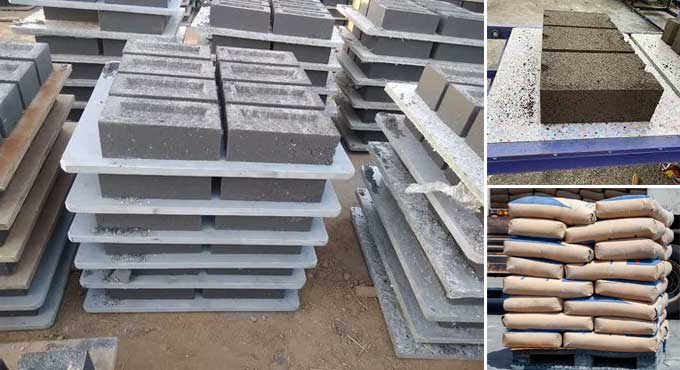
Demystifying Concrete Pallets: Unveiling Bags, Quantities, and Costs in Construction
Concrete, the backbone of modern construction, is a versatile and durable material essential for building everything from foundations to skyscrapers. One frequent approach for handling and transporting concrete is to use concrete pallets.
Understanding Concrete Pallets
What are Concrete Pallets?
Concrete pallets, also known as concrete blocks or concrete bags, are standardized units of concrete packaged for easy handling, transportation, and use on construction sites. These pallets are pre-mixed concrete bags that are ready to be mixed with water and placed into moulds or formwork for a variety of building purposes.
Components of Concrete Bags
Concrete bags typically consist of three main components:
- Cement: The binding agent in concrete, cement is a fine powder that, when mixed with water, forms a paste that binds the aggregates (such as sand and gravel) together.
- Aggregates: These are materials like sand and gravel that provide strength and durability to the concrete mix.
- Admixtures: Additional materials, such as chemical additives, may be included to enhance specific properties of the concrete, such as setting time or workability.
Benefits of Concrete Pallets
- Ease of Handling: Concrete bags are designed for easy handling, making them convenient for workers on construction sites.
- Consistency: The pre-mixed nature of concrete bags ensures consistent quality and proportions, reducing the risk of errors in mixing on-site.
- Reduced Waste: Concrete pallets help minimize waste by providing precise quantities of materials, reducing the likelihood of overordering.
- Portability: The compact and standardized nature of concrete bags allows for easy transportation, even in areas with limited access.
Quantities and Measurement
How Concrete Quantities Are Measured?
Concrete is usually measured in cubic yards or cubic metres. This measurement takes into consideration the whole volume of the concrete, which includes the cement, aggregates, and any other components. It is critical to precisely calculate the amount of concrete needed for a project in order to buy enough supplies without wasting any.
Calculating Concrete Quantities
The process of calculating concrete quantities involves determining the volume needed for a particular project. This is influenced by factors such as:
- Project Size: The size and dimensions of the construction project directly impact the required concrete volume.
- Mix Design: The mix design specifies the proportions of cement, aggregates, and admixtures in the concrete, affecting the volume of materials needed.
- Wastage Allowance: A reasonable allowance for wastage should be factored into the calculation to account for spillage, over-excavation, or unexpected variations.
- Formwork Shape: The shape of the formwork or moulds into which the concrete will be poured influences the calculation of the required volume.
The formula for calculating concrete quantity is:
Concrete Quantity=Length×Width×Height
Concrete Pallet Sizes
Concrete bags are typically packaged in standardized sizes. Common bag sizes include 40, 60, 80, or 100 pounds. The weight of the bag is determined by the mix design and the desired strength of the concrete.
The number of bags needed for a project may be determined by dividing the total concrete volume required by the volume represented by one bag. For example, if a project requires 10 cubic yards of concrete, and each bag represents 0.6 cubic feet, then the number of bags needed would be

Costs Associated with Concrete Pallets
Factors Influencing Concrete Costs
Several factors contribute to the cost of concrete, and understanding these variables is essential for accurate budgeting in construction projects:
- Concrete Mix Design: The composition of the concrete mix, including the type and proportions of cement, aggregates, and admixtures, affects its cost.
- Local Market Conditions: Prices for construction materials, including concrete, vary based on local market conditions, availability, and demand.
- Project Size: Larger projects often benefit from economies of scale, leading to lower costs per unit of concrete.
- Transportation Costs: The distance from the concrete plant to the construction site influences transportation costs, which can be a significant factor in overall expenses.
- Labour Costs: Labor costs associated with handling, mixing, and pouring the concrete contribute to the overall project cost.
- Formwork and Reinforcement: The type and complexity of formwork, as well as the need for reinforcement, can impact costs.
Calculating Concrete Costs
Concrete costs are generally calculated based on the total volume of concrete required for a project. The cost is calculated using the following formula:
Concrete Cost=Concrete Volume×Unit Cost
The unit cost includes the price of the concrete mix per cubic yard or cubic meter. It's important to obtain accurate quotes from concrete suppliers, considering all relevant factors that might affect the final cost.
Making Informed Decisions in Concrete Pallet Usage
Concrete pallets in the shape of bags serve an important role in streamlining the transportation, processing, and application of concrete on building sites. Understanding the components of concrete bags, the benefits they offer, and the factors influencing quantities and costs is essential for making informed decisions in construction projects.
By demystifying concrete pallets and delving into the intricacies of bags, quantities, and costs, construction professionals can optimize their processes, reduce waste, and ensure the efficient use of concrete resources. As technology continues to advance, innovations in concrete packaging and delivery will likely contribute further to the evolution of this essential construction material, making it even more accessible and convenient for projects of all scales.
To get more details, watch the following video tutorial.
Video Source: Pole Base


